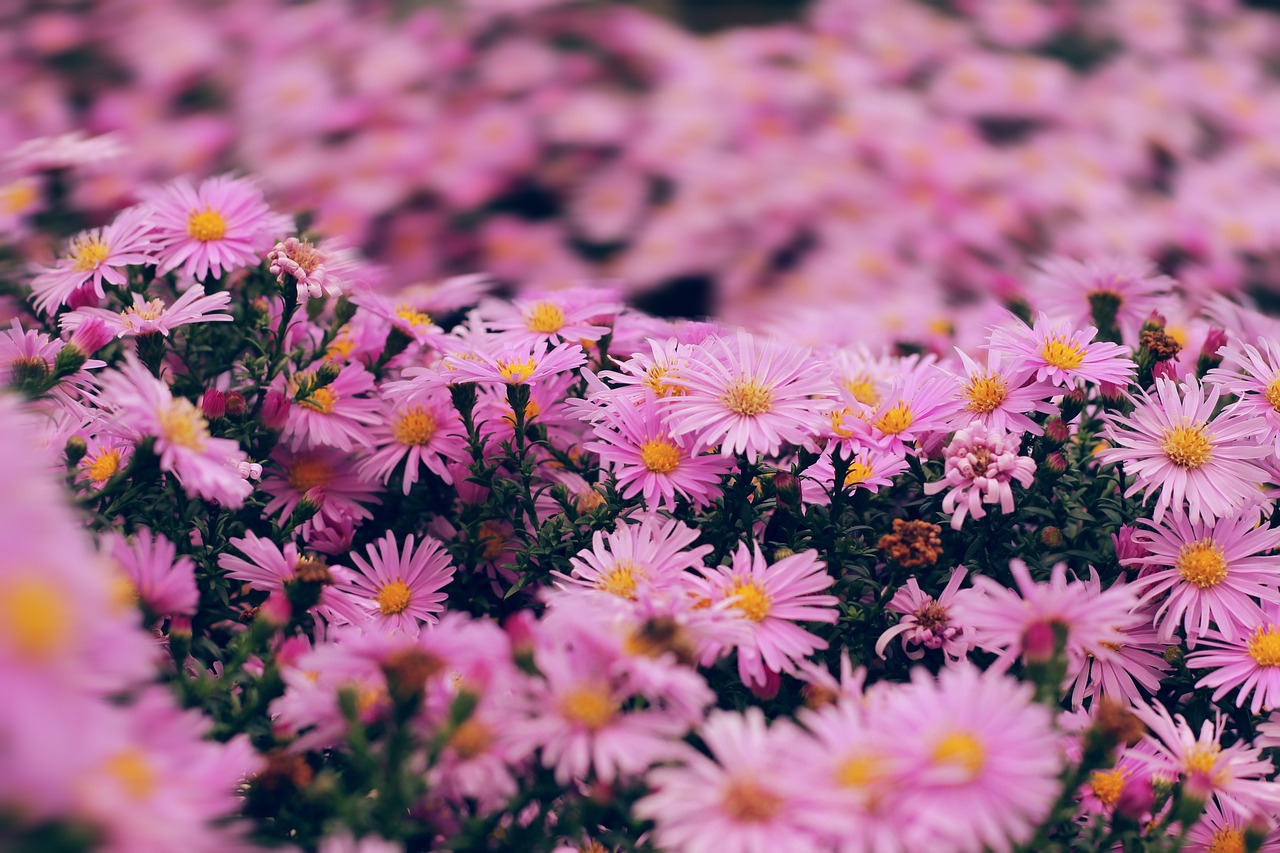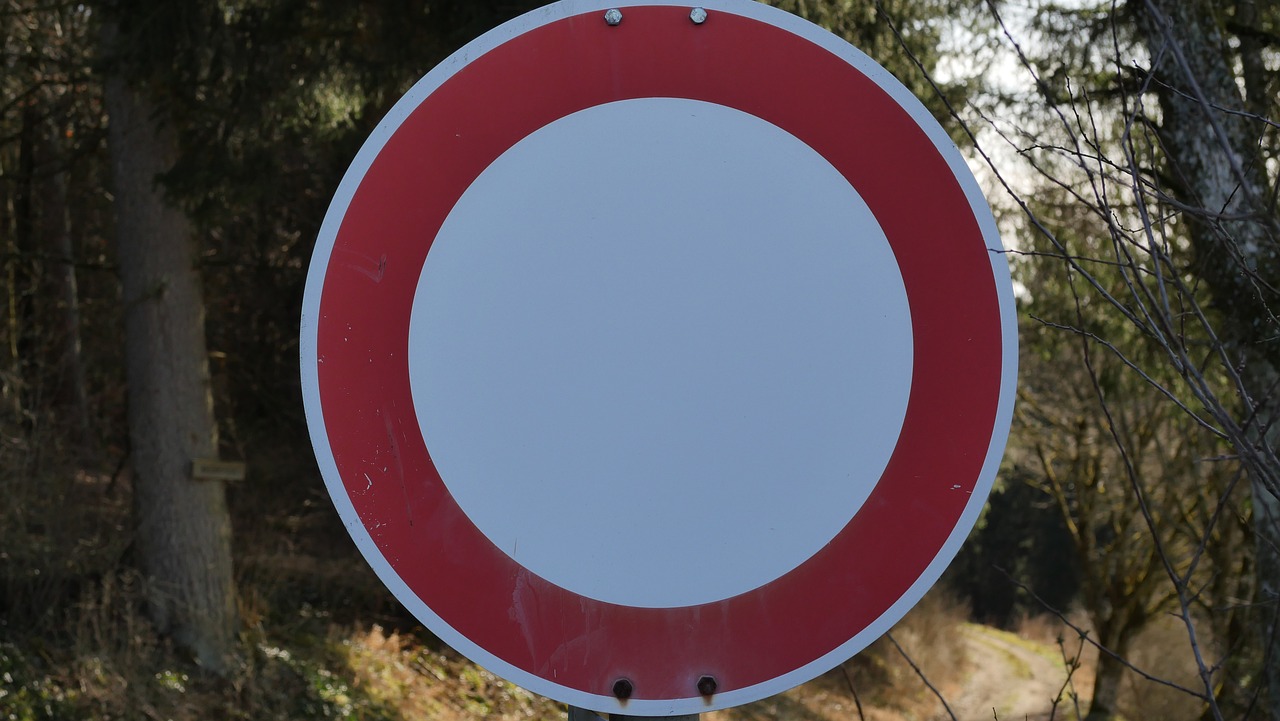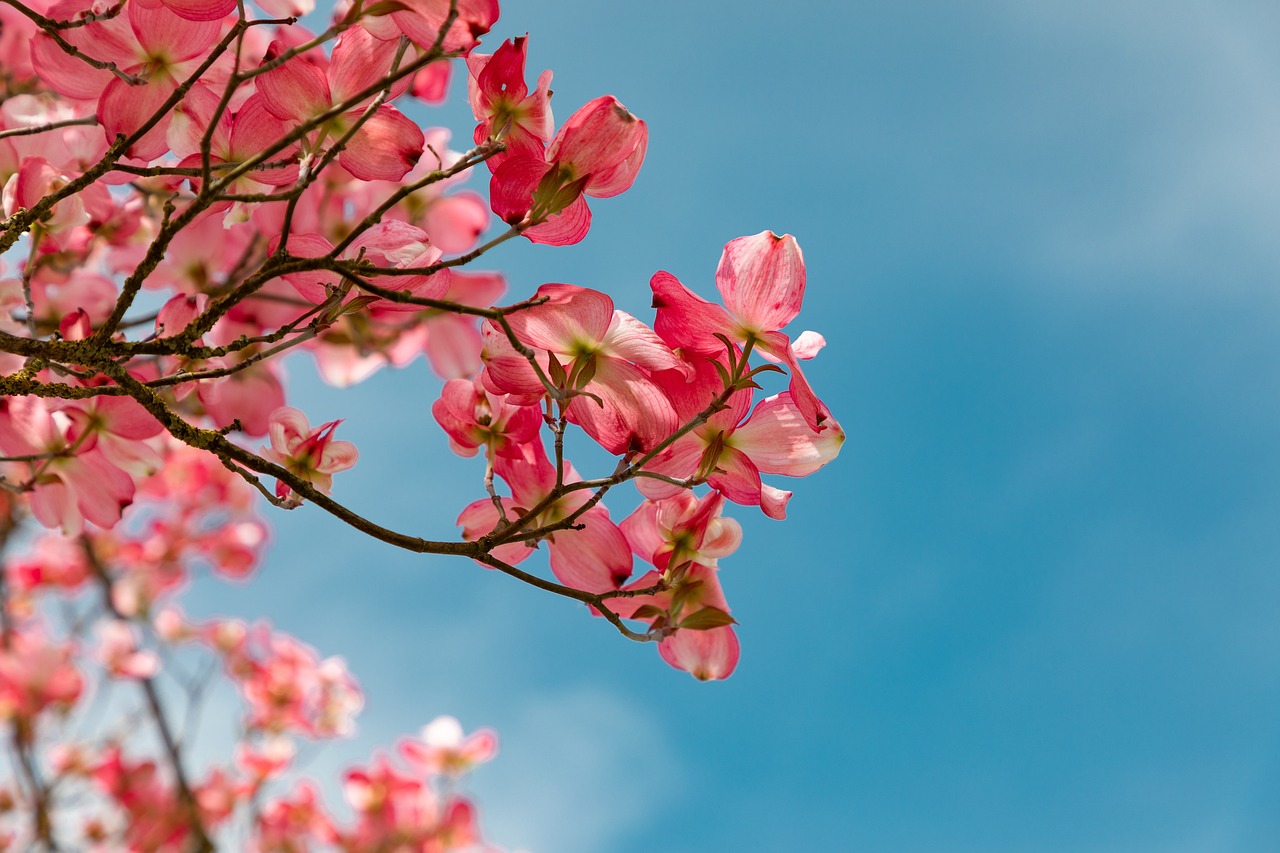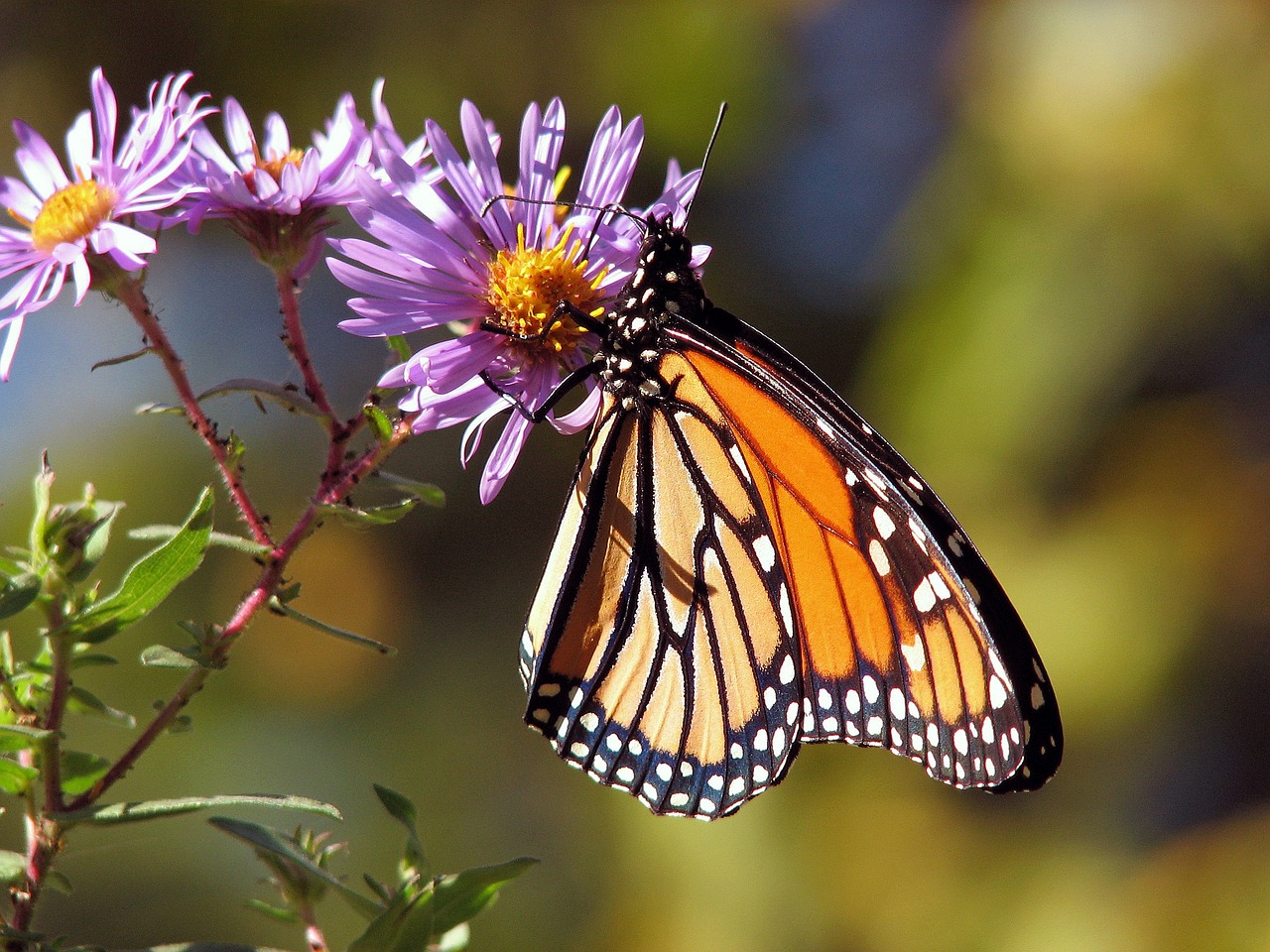Creating Garden Signs with a Personal Touch
Have you ever strolled through a garden and been captivated by a charming sign that seems to whisper secrets about the space? Creating personalized garden signs is not just about labeling plants or marking boundaries; it's an opportunity to express your personality and style. Imagine walking into your garden and being greeted by a sign that reflects your family's spirit, your love for nature, or even a favorite quote that inspires you daily. It's like adding a splash of your essence to the vibrant tapestry of your outdoor sanctuary.
In this article, we’ll dive into the art of crafting these delightful signs, exploring everything from materials to design techniques that will help you create something truly unique. Whether you're a seasoned DIY enthusiast or a beginner looking to dip your toes into creative projects, this guide will provide you with all the inspiration and know-how you need. So, grab your tools, and let’s get started on turning your garden into a personal paradise!
When it comes to making garden signs, the choice of materials can make or break your project. You want something durable that can withstand the elements while still looking fabulous. Here are a few popular options:
- Wood: A classic choice, wood can be easily shaped and painted. It offers a rustic charm and can blend beautifully with natural surroundings. However, it requires regular maintenance to prevent rot.
- Metal: For a more modern look, consider metal signs. They are incredibly durable and can be treated to resist rust and corrosion. Plus, they can be designed in various styles, from sleek and minimalist to ornate and decorative.
- Stone: If you want something that screams permanence, stone is your best bet. It adds a sense of gravitas to your garden, but keep in mind that it's heavier and may require more effort to install.
Choosing the right material is essential not just for aesthetics but also for ensuring your sign stands the test of time. Think about your garden's theme and environment to find the perfect match!
Now that you have your materials sorted, let’s talk about design. The layout, typography, and imagery you choose will significantly impact how your sign is perceived. A well-designed sign can become a focal point in your garden, drawing the eye and sparking conversations.
Consider the following elements when designing your sign:
- Layout: Keep it simple! A cluttered design can confuse the viewer. Aim for a clean and organized layout that highlights the important elements.
- Typography: The font you choose can convey different feelings. A playful script might evoke whimsy, while a bold serif font can suggest tradition and stability.
- Imagery: Adding images or symbols can enhance your message. Think of incorporating floral motifs, garden tools, or even a silhouette of your favorite animal.
With these tips, you can create a visually appealing design that stands out and complements your garden's character.
What better way to add a personal touch than with meaningful messages or quotes? Your garden sign can be a canvas for your thoughts, values, or even a family motto. This not only makes your sign unique but also resonates with anyone who visits your garden. Imagine a sign that reads, “Grow where you are planted,” inviting all who enter to embrace the beauty of growth and change.
Incorporating your family name into your garden sign adds a lovely personal touch. It creates a sense of ownership and pride, showcasing that this garden is a cherished space for you and your loved ones. A sign that says “The Smith Family Garden” not only marks your territory but also tells a story of togetherness and love.
Why not keep things fresh by changing your sign's message with the seasons? Seasonal greetings or themes can bring a delightful twist to your garden. For instance, during the fall, your sign could read “Harvest Blessings,” while in spring, it could transform into “Bloom Where You Are Planted.” This keeps your garden engaging and invites visitors to enjoy the ever-changing beauty of nature.
The right colors and finishes can elevate your garden sign’s appearance, making it pop against the backdrop of greenery. Think about using vibrant paints or stains that complement your garden's color palette. Additionally, consider protective finishes that can withstand rain, sun, and snow, ensuring your sign remains as stunning as the day you made it.
Now that you have your design and materials, it’s time to get crafty! Different crafting techniques can yield unique results. Whether you prefer painting, engraving, or carving, each method has its charm. For example, hand-painting allows for creativity and personalization, while stenciling offers precision and consistency.
When deciding between hand-painting or using stencils, consider your skill level and the look you’re aiming for. Hand-painting can be a fun, free-spirited process, while stenciling may provide cleaner lines and a more professional finish. Both methods can produce beautiful results, so choose what feels right for you!
If you’re looking to add depth and texture to your garden sign, engraving or carving can be a fantastic option. These techniques allow for intricate designs that can enhance the visual appeal of your outdoor space. Plus, they tend to be more durable against the elements, making them a smart choice for lasting beauty.
Once your sign is complete, it’s essential to keep it looking its best. Regular maintenance will ensure its beauty endures over time. Here are a few tips:
- Clean your sign regularly to remove dirt and grime.
- Inspect for any signs of wear or damage and repair as needed.
- Apply a protective sealant to shield against the elements.
With a little care, your personalized garden sign will continue to charm visitors for years to come!
Q: What materials are best for outdoor garden signs?
A: The best materials for outdoor garden signs include wood, metal, and stone, each offering unique benefits in terms of durability and aesthetics.
Q: How can I make my garden sign more personal?
A: Incorporating family names, personal quotes, or seasonal messages can add a meaningful touch to your garden sign.
Q: What techniques can I use to create my sign?
A: You can choose from hand-painting, stenciling, engraving, and carving, depending on your skill level and desired outcome.
Q: How do I maintain my garden sign?
A: Regular cleaning, inspections for damage, and applying protective sealants will help maintain your garden sign's appearance over time.

Choosing the Right Materials
When it comes to crafting personalized garden signs, the materials you choose can make all the difference. Not only do they affect the overall look of your sign, but they also play a crucial role in its durability and ability to withstand the elements. Imagine spending hours designing and crafting a beautiful sign, only to have it fade or deteriorate after a season of rain and sun. To avoid this, let’s dive into some of the most popular materials you can use, along with their pros and cons.
First up, we have wood. This classic material is a favorite among garden enthusiasts for its natural beauty and versatility. You can easily find various types of wood, from cedar to pine, each offering its unique charm. However, keep in mind that wood requires regular maintenance, such as sealing and staining, to protect it from the weather. If you’re going for a rustic or country feel, wood might just be your best bet.
Next, consider metal. Metal signs can bring a modern edge to your garden and are incredibly durable. Materials like aluminum and stainless steel are resistant to rust and can withstand harsh weather conditions. Plus, they can be painted or left in their natural state for a sleek look. However, metal can get hot in the sun, so if you’re in a particularly sunny area, this might not be the best choice for plants that are sensitive to heat.
Another fantastic option is stone. Stone garden signs exude a timeless elegance and can be beautifully engraved with your desired message. They are extremely durable and can last for decades without showing signs of wear. However, the weight of stone can be a consideration if you plan to move your sign around frequently. Plus, the initial cost can be higher compared to wood or metal, but think of it as an investment in your garden’s aesthetic.
In addition to these primary materials, there are also composite materials that combine the best features of wood and plastic, offering durability without the maintenance hassle. These options can be more affordable and are often designed to mimic the look of natural materials while providing resistance to fading and weather damage.
When selecting your materials, think about the overall theme of your garden. Do you want it to feel cozy and inviting, or sleek and modern? The right material can enhance the ambiance you’re aiming for. Here’s a quick comparison table to help you decide:
| Material | Durability | Maintenance | Cost |
|---|---|---|---|
| Wood | Moderate | High | Low to Moderate |
| Metal | High | Low | Moderate |
| Stone | Very High | Very Low | High |
| Composite | High | Low | Moderate |
Ultimately, the choice of material should align with your personal style and the message you want your garden sign to convey. So take your time, explore your options, and choose wisely. After all, your garden sign is not just a marker; it’s an extension of your personality and a reflection of the love you put into your garden.

Designing Your Sign
When it comes to designing your garden sign, it’s not just about slapping on a name or a quote; it’s about creating a visual story that reflects your personality and enhances the overall charm of your garden. Think of your sign as a welcome mat for your outdoor space, inviting guests to step into your world. The design process can be a thrilling adventure where you explore various elements such as layout, typography, and imagery.
First off, let’s talk about layout. The way you arrange the elements on your sign can significantly impact its readability and aesthetic appeal. Consider the size of the sign and the distance from which it will be viewed. A good rule of thumb is to keep it simple and uncluttered. You want your message to be clear at a glance. Imagine you're in a busy marketplace; you want your sign to pop out and grab attention amidst the chaos. Use a balanced composition to ensure that your sign is not just another piece of wood in the garden, but a focal point that draws the eye.
Next up is typography. The font you choose can convey different emotions and styles. For instance, a whimsical script font might evoke a sense of playfulness, while a bold serif font can lend an air of sophistication. Here are a few tips to keep in mind:
- Legibility is key: Make sure your font is easy to read from a distance.
- Limit your font choices: Stick to two or three fonts to maintain harmony.
- Consider your garden's theme: Match the font style to the overall vibe of your garden.
Imagery also plays a crucial role in the design of your garden sign. Whether you choose to include illustrations, symbols, or decorative borders, these elements can enhance the sign's appeal and help communicate your message. Think about what represents your garden best. Is it a sunflower, a butterfly, or perhaps a rustic wheelbarrow? Incorporating these visuals can add a personal touch that resonates with anyone who visits.
As you dive into the design process, don't forget about color! The right color palette can make or break your sign. Vibrant colors can add energy and excitement, while muted tones might create a more serene and calming effect. Consider the colors of your garden flowers and plants; you might want to choose colors that either complement or contrast with them for maximum visual impact. Here’s a quick table to help you visualize how different colors can set various moods:
| Color | Mood/Emotion |
|---|---|
| Red | Excitement, Passion |
| Blue | Calm, Trust |
| Yellow | Happiness, Energy |
| Green | Nature, Growth |
| Purple | Luxury, Creativity |
Finally, don’t forget to think about the finish of your sign. A glossy finish can make colors pop, while a matte finish might give a rustic charm. Sealants are also crucial for protecting your sign from the elements, ensuring that it remains vibrant and intact for years to come. Remember, your garden sign is an investment in your space, so take the time to make it truly reflect your unique style.
In conclusion, designing your garden sign is an exciting opportunity to express yourself. By carefully considering layout, typography, imagery, color, and finish, you can create a sign that not only enhances your garden but also tells your story. So grab those design tools, let your creativity flow, and transform your garden into a personal paradise!
Q: What materials are best for outdoor garden signs?
A: Materials like wood, metal, and stone are popular choices due to their durability and aesthetic appeal. Each material has its unique charm, so choose one that fits your garden's style.
Q: How can I make my garden sign stand out?
A: Use bold colors, unique typography, and personal imagery to create a sign that captures attention. Also, consider the placement of the sign; position it where it can be easily seen.
Q: Should I change my garden sign seasonally?
A: Absolutely! Changing your sign's message with the seasons can keep your garden feeling fresh and inviting. It’s a great way to engage visitors and reflect the changing beauty of nature.

Incorporating Personal Messages
Adding personal messages or quotes to your garden sign can transform it from a simple marker into a heartfelt expression of your personality and values. Imagine strolling through your garden and being greeted by a sign that not only directs visitors but also speaks to them. This is where the magic happens! Personal messages create a connection, making your outdoor space feel more like an extension of your home. So, how do you go about this? Let's dive into some creative ways to incorporate meaningful words into your garden signs.
First off, consider what resonates with you. Do you have a favorite quote that inspires you? Perhaps a line from a beloved poem or a personal motto? These can serve as a fantastic starting point. Think about the themes that reflect your life or your garden’s vibe. For instance, if your garden is a peaceful retreat, a message like "Bloom where you are planted" could be fitting. If it’s a lively family space, something playful like "Welcome to our happy place!" might be more appropriate.
Another great idea is to use family names or initials to create a sense of ownership. Imagine a sign that reads "The Smith Family Garden" or simply "Smith's Oasis." This not only personalizes your space but also invites others to feel a sense of belonging. You could even use your family name as part of a fun pun or play on words, such as "Smith & Co. Garden of Wonders."
Additionally, think about incorporating seasonal messages that change throughout the year. This adds an element of surprise and keeps your garden feeling fresh. For example, in spring, you might display "Welcome Spring!" while in autumn, a sign that reads "Harvest Time!" could invite visitors to appreciate the seasonal changes. This not only enhances the aesthetic appeal but also engages your visitors in a delightful way.
When choosing your message, consider the typography and layout as well. The font you select can convey different emotions—playful, elegant, rustic, or modern. Pairing a whimsical font with a light-hearted quote can create a fun atmosphere, while a classic serif font might be more suitable for a serious or elegant message. Don't forget about the color scheme! Ensure that your text stands out against the background of your sign for maximum visibility.
To help you brainstorm, here’s a quick table of ideas for personal messages:
| Type of Message | Example |
|---|---|
| Inspirational Quote | "Grow through what you go through." |
| Family Name | "The Johnson Family Garden" |
| Seasonal Greeting | "Happy Fall Y'all!" |
| Humorous Message | "Gardeners know all the dirt!" |
Incorporating personal messages into your garden sign is not just about aesthetics; it’s about creating a space that feels uniquely yours. It’s an opportunity to share your story, your humor, and your love for gardening with others. So, grab your tools, get creative, and let your garden sign reflect the beautiful tapestry of your life!
Q: What materials are best for creating garden signs with personal messages?
A: The best materials depend on your garden's aesthetic and climate. Wood is popular for its natural look, while metal offers durability. Stone can add a rustic charm. Choose a material that reflects your style and withstands the elements.
Q: How can I ensure my personal message stands out?
A: Use contrasting colors for your text and background, and choose a font that is easy to read from a distance. Consider adding decorative elements that complement your message without overwhelming it.
Q: How often should I change seasonal messages?
A: Changing your messages with each season can keep your garden feeling fresh and engaging. Aim to update them at least four times a year, or whenever you feel inspired!

Using Family Names
Incorporating your family name into your garden sign is not just a decorative choice—it's a heartfelt way to express your family's identity and pride. Imagine walking through your garden and seeing a beautifully crafted sign that reads "The Johnson Family Garden" or "Welcome to the Smiths' Oasis." It adds a personal touch that transforms a simple garden into a cherished family space. This practice not only enhances the aesthetic appeal of your garden but also creates a sense of ownership that resonates with every member of the family.
When you use your family name, you invite visitors to share in your family's story. It's like giving them a glimpse into your world, showcasing your roots and the love that nurtures your garden. To make it even more special, consider the following ideas:
- Font Selection: Choose a font that reflects your family's personality. Whether it's a classic serif for a traditional feel or a whimsical script for a more playful vibe, the font can say a lot about who you are.
- Size Matters: The size of your sign should be proportionate to your garden. A large, bold sign can create a striking focal point, while a smaller, more subtle sign might blend beautifully with your plants.
- Placement: Think about where to place your sign. A welcoming sign at the entrance or a more intimate sign nestled among the flowers can create different atmospheres.
Moreover, you can enhance the personalization by adding family crests or symbols that represent your family's values and traditions. This extra touch can make the sign feel even more unique and meaningful. For example, if your family loves gardening, you might include a small illustration of a favorite flower or plant alongside your name. This not only beautifies the sign but also tells a story about your family's interests and passions.
In essence, using family names in your garden sign is a delightful way to celebrate your heritage and make your garden feel like a true extension of your home. It’s a simple yet powerful statement that invites others to appreciate the love and care you’ve poured into your outdoor space. So, as you embark on creating your personalized garden sign, let your family name shine bright—it’s a reflection of your unique story and the beautiful memories you’re cultivating in your garden.
Q: How can I choose the best font for my family name sign?
A: Consider your family's personality and the overall theme of your garden. A classic serif font suits traditional gardens, while a playful script may fit a whimsical garden better.
Q: What materials are best for a family name garden sign?
A: Wood, metal, and stone are popular choices. Wood offers a rustic charm, metal provides durability, and stone adds an elegant touch.
Q: How can I maintain my garden sign?
A: Regular cleaning and applying sealants can protect your sign from the elements. Make sure to check for any wear and tear, especially after harsh weather.
Q: Can I change the message on my sign seasonally?
A: Absolutely! Using removable letters or seasonal decorations can keep your garden sign fresh and engaging throughout the year.

Seasonal Messages
Have you ever walked through a garden and felt a wave of joy from a simple sign that reflects the season? can transform your garden into a vibrant tapestry that changes with the time of year. Imagine stepping outside in the spring to see a cheerful welcome like "Blooming into Spring!" or enjoying the cozy feel of autumn with a sign that says "Harvest Blessings." These little touches not only enhance the beauty of your garden but also invite visitors to appreciate the changing seasons.
Incorporating seasonal messages into your garden signs is a fantastic way to keep your outdoor space fresh and engaging. You can change your sign's message as the seasons shift, creating a dynamic environment that reflects the world around you. This practice is like dressing your garden in a new outfit every few months, keeping it fashionable and inviting.
Here are some ideas for seasonal messages you might consider:
- Spring: "Welcome Spring!" or "Time to Bloom!"
- Summer: "Sunshine and Smiles" or "Garden Party Time!"
- Autumn: "Fall into Autumn" or "Harvest Time!"
- Winter: "Let it Snow!" or "Winter Wonderland Awaits!"
Choosing the right message can also reflect your personality and values, making your garden not just a visual delight but a personal statement. Think about what each season means to you or consider using quotes that resonate with the feelings each season evokes. For example, a quote like "In the depth of winter, I finally learned that within me there lay an invincible summer" can bring depth to your winter sign.
Additionally, you can create a rotating sign that allows you to easily swap out messages as the seasons change. This could be a simple wooden board with holes drilled into it for easy attachment of different messages or a more elaborate design with interchangeable letters. Not only does this keep your garden looking fresh, but it also adds an element of fun and creativity to your gardening experience.
So, whether you're crafting your own signs or purchasing them, don't underestimate the power of seasonal messages. They can bring warmth and personality to your garden, making it a welcoming haven for both you and your visitors. After all, who wouldn't want to stroll through a garden that speaks to the heart of each season?
- How often should I change my seasonal messages? It's a good idea to update your messages every season, but you can also change them more frequently if you feel inspired!
- What materials are best for seasonal signs? Weather-resistant materials like treated wood, metal, or stone are ideal as they can withstand the elements.
- Can I use digital designs for my garden signs? Absolutely! Digital designs can be printed on weatherproof materials for a modern touch.
- How can I ensure my signs last through the seasons? Use outdoor sealants and paints, and consider storing them indoors during extreme weather conditions.

Color and Finish Options
When it comes to creating a stunning garden sign, the color and finish you choose can make a world of difference. Imagine walking through your garden and being greeted by a sign that not only stands out but also complements the natural beauty surrounding it. The right colors can evoke emotions, set the mood, and even enhance the overall aesthetics of your garden space. So, how do you select the perfect palette for your personalized sign?
First, consider the theme of your garden. Are you going for a whimsical fairy garden vibe, or is your style more rustic and earthy? For a whimsical garden, bright and cheerful colors like vibrant yellows, soft pinks, and sky blues can create a playful atmosphere. On the other hand, earthy tones such as deep greens, browns, and muted grays work beautifully for a more natural, serene look. You might want to use a color wheel to help you visualize complementary colors that will make your sign pop without clashing with the surroundings.
Next, think about the finish of your sign. A glossy finish can give your sign a modern and sleek appearance, while a matte finish offers a more rustic and understated charm. If your garden is exposed to the elements, opting for a durable finish is essential. Here are a few options to consider:
- Glossy Paint: Provides a shiny, reflective surface that can enhance colors and resist fading.
- Matte Paint: Offers a soft, non-reflective finish that can give a more natural look.
- Stains: Great for wood signs, allowing the natural grain to show through while adding color.
- Sealants: Essential for protecting your sign from moisture and UV rays, extending its lifespan.
Additionally, don't forget about the environment your sign will be in. If your garden receives a lot of sunlight, using UV-resistant paint and finishes can help prevent fading. For areas prone to moisture, consider using water-resistant materials and sealants to keep your sign looking fresh and vibrant.
Finally, let your personality shine through your choices. Whether you prefer bold, eye-catching colors or soft, muted tones, your garden sign should reflect who you are. Mixing and matching different colors and finishes can create a unique look that tells a story about your garden and your style. So, get creative, experiment with samples, and don't be afraid to let your imagination run wild!
Q: What type of paint is best for outdoor garden signs?
A: Look for weather-resistant acrylic paints or specialized outdoor paints that can withstand the elements.
Q: How can I protect my garden sign from fading?
A: Applying a UV-resistant sealant can help protect your sign from sun damage and fading.
Q: Can I use wood for my garden sign?
A: Absolutely! Just ensure you treat the wood with a weatherproof sealant to prolong its life.
Q: What colors work best in a shaded garden?
A: Bright and vibrant colors can stand out beautifully in shaded areas, making them a great choice for such gardens.

Techniques for Crafting
When it comes to creating stunning garden signs, the technique you choose can make all the difference. Crafting is not just about slapping some paint on a board; it's an art form that allows you to express your creativity while adding a personal touch to your garden. There are various methods you can employ, each offering a unique aesthetic and feel. From painting to engraving, understanding these techniques will help you create a sign that not only looks fantastic but also reflects your style.
One of the most popular techniques is hand-painting. This method allows for a high level of personalization, as you can choose your colors, designs, and lettering styles. Hand-painting can be a bit time-consuming, but the results are often worth the effort. Imagine the satisfaction of seeing your own brushstrokes on a sign that welcomes guests to your garden! However, if you're pressed for time or feel less confident in your painting skills, stenciling is a great alternative. Stencils can provide a clean, professional look and can be easily customized to fit your design vision. With a steady hand and some spray paint or a sponge, you can achieve a polished finish that stands out.
Another technique to consider is engraving or carving. This method adds a beautiful depth and texture to your sign, making it a true statement piece in your garden. Engraving can be done using various tools, from simple carving knives to more advanced rotary tools. If you're new to this technique, start with a basic design and gradually work your way up to more intricate patterns. Not only does engraving create a stunning visual effect, but it also ensures that your message will withstand the test of time, as engraved signs are less likely to fade or wear away compared to painted ones.
For those who prefer a more modern approach, consider using vinyl decals. These are pre-made designs that you can apply to your sign, offering a clean and professional appearance without the need for advanced crafting skills. Vinyl decals come in a variety of colors and styles, allowing you to easily switch up your garden's look whenever you feel like it. Plus, they're weather-resistant, making them a practical choice for outdoor use.
Regardless of the technique you choose, it's essential to consider the materials you'll be using. Some techniques work better with specific materials, so think about how your choice will affect the final product. For instance, wood is a fantastic canvas for hand-painting or carving, while metal might be better suited for engraving. Don't forget to factor in the finish as well; a good sealant can protect your sign from the elements and extend its lifespan.
To help you visualize the differences between these techniques, here's a quick comparison table:
| Technique | Pros | Cons |
|---|---|---|
| Hand-Painting | Highly personalized, creative freedom | Time-consuming, requires skill |
| Stenciling | Clean finish, easy to execute | Less unique, requires stencils |
| Engraving/Carving | Durable, adds texture | Requires tools, can be challenging |
| Vinyl Decals | Quick application, weather-resistant | Less personal, may peel over time |
Ultimately, the best technique for crafting your garden sign will depend on your personal preferences, skills, and the message you want to convey. Embrace the process, experiment with different methods, and most importantly, have fun creating a sign that adds charm and character to your garden!
- What materials are best for outdoor garden signs? Generally, wood, metal, and stone are excellent choices due to their durability and aesthetic appeal.
- Can I change the message on my garden sign seasonally? Absolutely! Switching up your sign's message can keep your garden feeling fresh and inviting.
- How do I maintain my garden sign? Regular cleaning and applying a protective sealant can help preserve your sign's appearance over time.

Hand-Painting vs. Stenciling
When it comes to crafting your personalized garden sign, one of the most exciting decisions you'll face is choosing between hand-painting and stenciling. Both techniques come with their own unique flair and can significantly impact the overall look of your sign. So, how do you decide which method is right for you? Let’s dive into the pros and cons of each technique!
Hand-painting is like letting your creativity flow freely onto the canvas of your garden sign. It allows for a level of personalization that stenciling simply can't match. With a brush in hand, you can create intricate designs, varying strokes, and even incorporate your own unique style. This method is perfect for those who enjoy the process of painting and want to express their artistic side. However, it does require a steady hand and a bit of practice to achieve a polished look. If you're up for the challenge, hand-painting can yield stunning, one-of-a-kind results that truly reflect your personality.
On the other hand, stenciling offers a more structured approach to sign-making. It’s ideal for those who may not feel as confident in their painting skills but still want a professional-looking finish. Stencils come in various designs and fonts, allowing you to easily replicate precise lettering and shapes. This method is particularly beneficial if you’re creating multiple signs or want consistency in your design. Simply place the stencil on your sign, apply your paint, and voilà! You have a beautifully crafted sign without the worry of shaky lines or uneven letters.
To help you weigh your options, here’s a quick comparison:
| Technique | Pros | Cons |
|---|---|---|
| Hand-Painting |
|
|
| Stenciling |
|
|
Ultimately, the choice between hand-painting and stenciling boils down to your personal preference and comfort level. If you’re an artistic soul who enjoys the process of painting, hand-painting may be your best bet. But if you prefer a more straightforward approach that guarantees clean lines and uniformity, stenciling could be the way to go. Whichever method you choose, remember that the most important aspect is to have fun and let your garden sign reflect your unique style!
Q: Can I mix both techniques?
A: Absolutely! Many crafters find that combining hand-painting and stenciling can create a dynamic and visually interesting sign. For instance, you could stencil the main text and hand-paint decorative elements around it.
Q: What type of paint should I use for outdoor signs?
A: Look for weather-resistant paints, such as acrylic or enamel, specifically designed for outdoor use. These will help your sign withstand the elements and maintain its vibrant colors.
Q: How can I protect my sign from fading?
A: Applying a clear sealant or varnish can help protect your sign from UV rays, moisture, and other environmental factors that could cause fading over time.

Engraving and Carving
Engraving and carving are two of the most captivating techniques you can use to create stunning garden signs that truly stand out. These methods not only add a touch of elegance but also provide a durability that painted signs often lack. Imagine a beautifully carved wooden sign, its surface glistening in the sunlight, showcasing your family name or a meaningful quote. It’s a work of art that invites admiration and sparks conversations.
When considering engraving or carving, it's essential to understand the tools and materials you'll need. For engraving, a rotary tool or a laser engraver can produce precise designs, while carving can be accomplished with chisels or knives. The choice of material also plays a crucial role; hardwoods like oak or walnut are excellent for carving due to their density, while softer woods like pine are easier to work with but may not hold up as well over time.
Here are some key points to consider when embarking on your engraving or carving project:
- Design Planning: Before you start, sketch out your design on paper. This will help you visualize the final product and make adjustments as needed.
- Practice: If you're new to these techniques, practice on scrap materials first. This will build your confidence and improve your skills.
- Finishing Touches: After engraving or carving, consider adding a protective finish to your sign. This could be a clear sealant that enhances the wood's natural beauty and protects it from the elements.
Engraving tends to produce cleaner lines and can be more intricate, allowing for detailed designs that can include images or logos. On the other hand, carving offers a more rustic charm and can give your sign a three-dimensional quality that draws the eye. For example, a carved flower or leaf design can add a beautiful organic element to your sign, making it feel like a part of the garden itself.
Whichever technique you choose, the key to a successful garden sign lies in your creativity and attention to detail. Don't be afraid to experiment with different designs and styles. After all, your garden sign is a reflection of your personality and a way to express your love for your garden.
Q: What materials are best for engraving and carving?
A: Hardwoods like oak, maple, and walnut are ideal for carving due to their density and durability. For engraving, softer woods or even materials like acrylic can work well.
Q: Do I need special tools for engraving?
A: While a rotary tool is commonly used for engraving, you can also use a laser engraver for more precision. Hand tools like engraving pens can also be effective for smaller projects.
Q: How do I maintain my engraved or carved sign?
A: Regularly clean your sign with a soft cloth to remove dirt and debris. Applying a clear sealant every couple of years can help protect it from the elements.

Maintaining Your Garden Sign
Once you've put in the effort to create a beautiful garden sign, the last thing you want is for it to fade away or deteriorate over time. Regular maintenance is key to keeping your sign looking fresh and vibrant. Think of your garden sign as a beloved pet; it requires care, attention, and a little bit of love to thrive in its environment. So, how do you ensure your garden sign remains a stunning focal point in your garden?
First and foremost, cleaning your sign regularly is essential. Dust, dirt, and even mold can accumulate, especially if your sign is made from wood or metal. To clean it, simply use a soft cloth or sponge with mild soap and water. Avoid harsh chemicals that could damage the finish or material. For wooden signs, a gentle scrub with a soft brush can help remove stubborn grime without causing scratches.
Next, consider the weather conditions your sign faces. If you live in an area with extreme weather—be it scorching sun, heavy rain, or snow—it's crucial to take preventative measures. Applying a protective sealant can help shield your sign from the elements. For wooden signs, a good outdoor varnish or wood sealant can keep moisture at bay and prevent warping or cracking. Metal signs may benefit from a rust-resistant spray to keep them looking pristine.
Another important aspect of maintenance is repairing any damage promptly. If you notice chips, scratches, or fading colors, don’t wait! Address these issues as soon as possible to prevent further deterioration. For wooden signs, a bit of touch-up paint can work wonders, while metal signs can often be restored with a little sanding and repainting. Keeping a small repair kit handy can make it easier to tackle these issues on the fly.
Lastly, don't forget about seasonal maintenance. Just as you change your wardrobe with the seasons, consider updating your garden sign to reflect the time of year. This could mean changing the message or simply giving it a fresh coat of paint. For example, in the fall, you might want to add a harvest theme, while in spring, a cheerful greeting can brighten up the space. Regular updates not only keep your sign looking new but also engage visitors with fresh content.
In summary, maintaining your garden sign is a simple yet rewarding process that can greatly enhance your outdoor space. By keeping it clean, protected, and regularly updated, you ensure that your sign continues to reflect your unique style and adds charm to your garden for years to come. Remember, a little care goes a long way in preserving the beauty of your garden sign!
- How often should I clean my garden sign? It's best to clean your garden sign at least once every season, or more frequently if you notice dirt or grime buildup.
- What materials are best for outdoor signs? Durable materials like treated wood, metal, or stone are excellent choices for outdoor garden signs due to their longevity and weather resistance.
- Can I paint over an old sign? Yes, you can paint over an old sign, but make sure to clean it thoroughly and use a primer if necessary to ensure the new paint adheres well.
- How can I protect my wooden sign from the elements? Applying a weather-resistant sealant or varnish can help protect your wooden sign from moisture and UV damage.
Frequently Asked Questions
- What materials are best for creating garden signs?
When it comes to crafting garden signs, the choice of materials is crucial. Common options include wood, metal, and stone. Wood offers a rustic charm, while metal can provide a sleek, modern look. Stone is incredibly durable and can withstand the elements, making it a great choice for long-lasting signs. Consider your garden's theme and the local weather conditions when selecting the right material.
- How can I personalize my garden sign?
Personalizing your garden sign can be as simple as adding your family name or a favorite quote. Think about what makes your garden special to you. You could incorporate seasonal messages to keep things fresh, or even include symbols that represent your family's values. The key is to reflect your personality and create a sign that resonates with the ambiance of your garden.
- What design techniques should I consider?
Design is all about making your sign visually appealing. Pay attention to layout, typography, and imagery. You might want to use stencils for a clean look or hand-paint for a more personal touch. Think about how colors and finishes will complement your garden's aesthetics. Don't forget to ensure that the text is legible from a distance!
- How do I maintain my garden sign?
Regular maintenance is key to preserving the beauty of your garden sign. Clean it periodically to remove dirt and grime. If you notice any damage, consider repairing or repainting it to keep it looking fresh. Additionally, using sealants can protect your sign from harsh weather conditions, ensuring it remains vibrant and intact for years to come.
- Can I change the message on my garden sign seasonally?
Absolutely! Changing your garden sign's message with the seasons can add a fun and dynamic element to your outdoor space. Whether it’s a festive greeting for the holidays or a simple seasonal theme, updating your sign can keep your garden feeling alive and inviting. It's a great way to engage visitors and showcase your creativity!



















